.
9.10.2014

SELFIE
ESA-Astronaut Alexander Gerst hat am 7. Oktober 2014 seinen Außenbordeinsatz an der Internationalen Raumstation ISS erfolgreich beendet. Zusammen mit seinem NASA-Kollegen Reid Wiseman hat Gerst Wartungsarbeiten an der Raumstation durchgeführt. Die beiden Astronauten verbrachten sechseinhalb Stunden im Vakuum des Weltall und hatten dabei einen beeindruckenden Ausblick auf die Erde.
.

ESA astronaut Alexander Gerst spent six hours and 13 minutes outside the International Space Station with NASA astronaut Reid Wiseman on Tuesday, 7 October 2014. This was the first spacewalk for both astronauts but they performed well in the weightlessness of orbit.
In a weightless world where there is no up or down, the pair worked together to move a 385 kg pump from the Station’s truss to a permanent stowage location near the US Destiny module.
Alexander strapped himself to the Station’s robotic arm and held on to the unit while NASA astronaut Butch Wilmore operated the 16 m-long Canadarm from inside the orbital outpost. While moving, Alexander held on to the pump unit with flexed arms to absorb any shocks.
After working with Reid to attach the pump, Alexander took the arm for a last ride to park it and prepare it for its next use, berthing visiting spacecraft. Here, Alexander had his hands free and time to take a few photographs, such as this one.
Alexander’s feet are strapped to the arm and tethers secure him to the arm. To the right is the commercial Dragon supply vessel.
Alexander then helped Reid upgrade the power relay on a trolley before they returned to the airlock at 18:34 GMT (20:34 CEST).
.

.
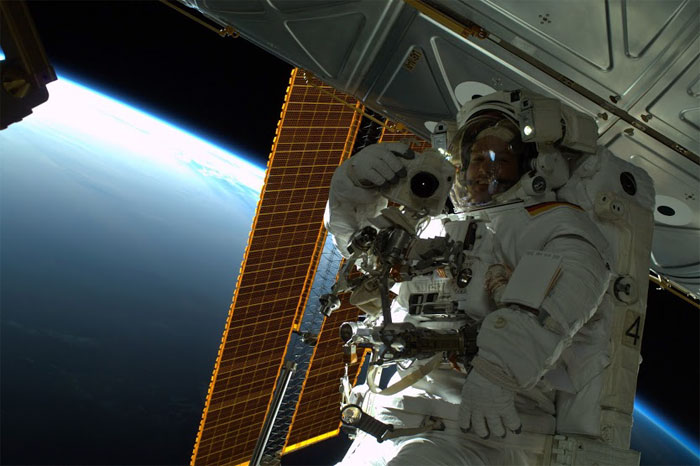
.
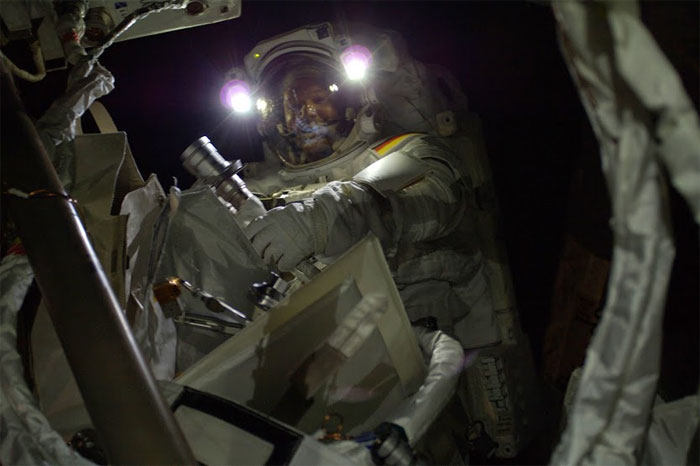
.
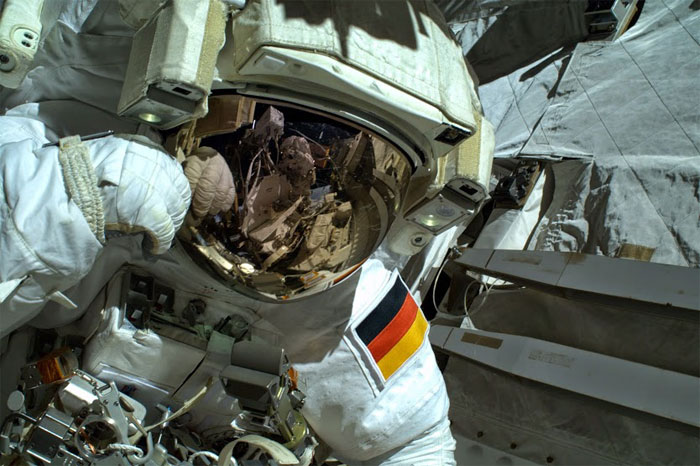
.

.

.
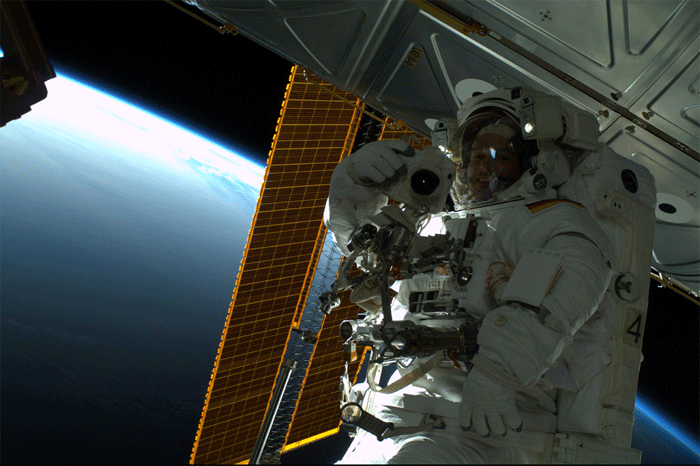
.

.

.

.

.

.

.

.

.

.

.

.

Zurück nach Spacewalk
...
Rückblick auf die letzten Wochen auf ISS
.
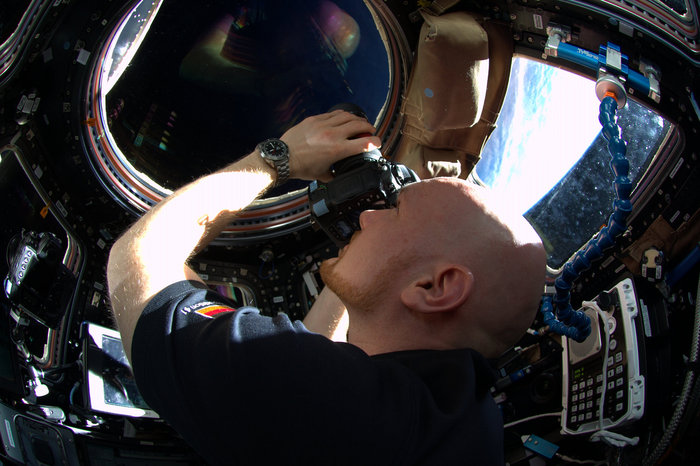
ESA astronaut Alexander Gerst on the lookout for the arrival of the 4th Dragon supply vessel, 23 September. Working with NASA astronaut Reid Wiseman, Alexander used the Station’s 17 m-long Canadarm2 robotic arm to capture and berth the fourth Dragon supply vessel.
Setting up a temporary robotics workstation in the Station’s Cupola observatory module, the astronauts monitored the approaching six-tonne craft until it stopped 10 m from the Station. Working two joysticks, Alexander moved Canadarm2 to hold Dragon-4. From there, the spacecraft was berthed to the Space Station’s Harmony module.
.

The Dragon-4 spacecraft approaching the International Space Station pictured by ESA astronaut Alexander Gerst. The Dragon's 'fire' are propulsion jets.
Despite running the International Space Station with just three crewmembers, ESA astronaut Alexander Gerst and NASA astronaut Reid Wiseman used the Station’s 17 m-long Canadarm2 robotic arm to capture and berth the fourth Dragon supply vessel.
Setting up a temporary robotics workstation in the Station’s Cupola observatory module, the astronauts monitored the approaching six-tonne craft until it stopped 10 m from the Station. Working two joysticks, Alexander moved Canadarm2 to hold Dragon-4. From there, the spacecraft was berthed to the Space Station’s Harmony module.
.
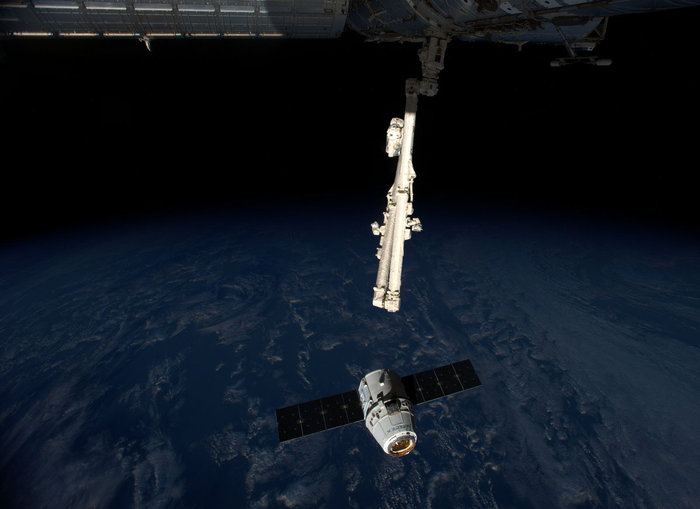
Despite running the International Space Station with just three crewmembers, ESA astronaut Alexander Gerst and NASA astronaut Reid Wiseman used the Station’s 17 m-long Canadarm2 robotic arm to capture and berth the fourth Dragon supply vessel.
Setting up a temporary robotics workstation in the Station’s Cupola observatory module, the astronauts monitored the approaching six-tonne craft until it stopped 10 m from the Station. Working two joysticks, Alexander moved Canadarm2 to hold Dragon-4. From there, the spacecraft was berthed to the Space Station’s Harmony module.
On Wednesday the hatch will be opened to reach the supplies. Dragon will stay for four weeks before it returns to Earth with experiments and samples.
Later this week the three astronauts now on the Station – commander Maxim Suarev, Alexander and Reid – will be joined by three new astronauts, arriving on a Soyuz spacecraft.
.
Quelle: ESA
.
Update: 22.10.2014
.

.

.

.

.

.

.

.
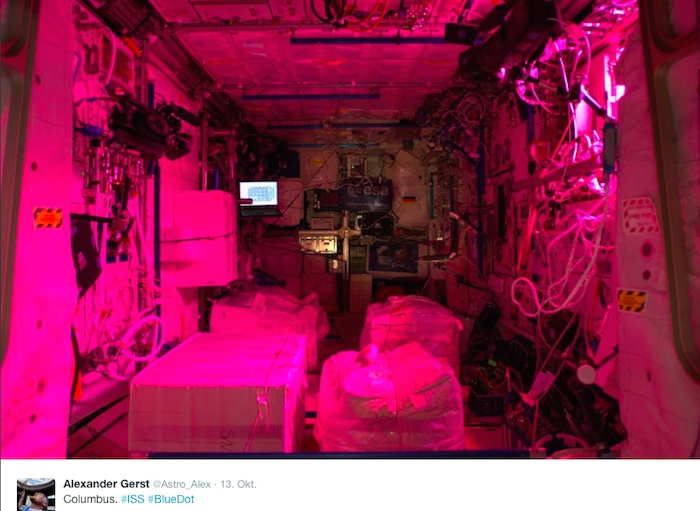
.

.

.

.

Quelle: ESA
5549 Views
